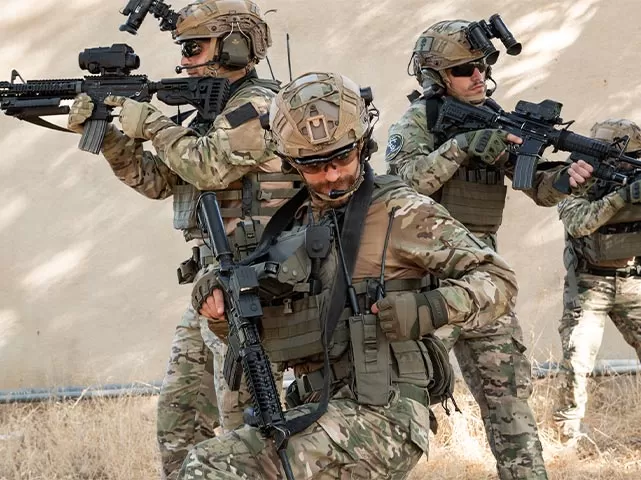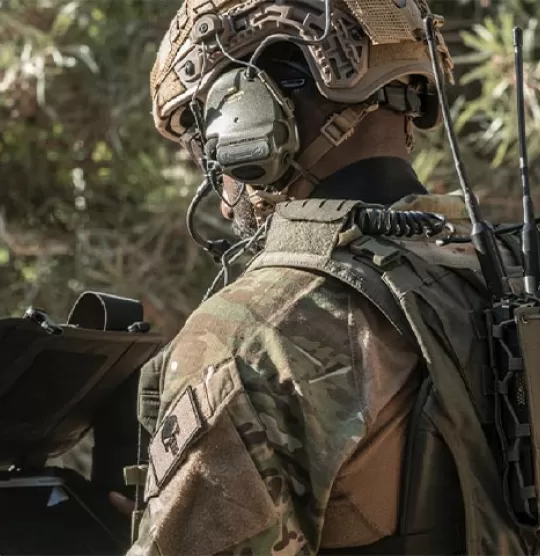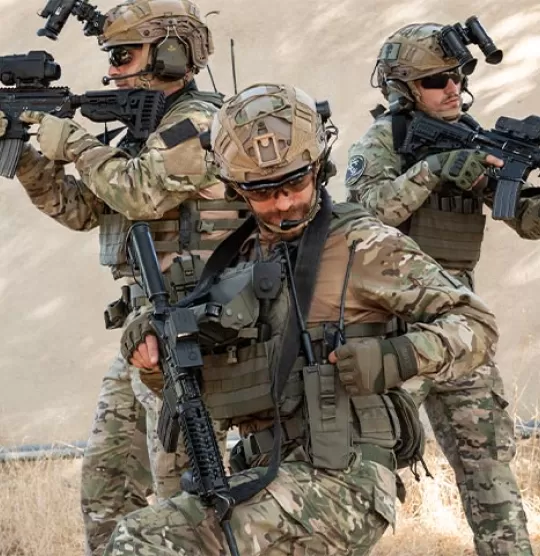
The Soldier’s Digital Lifeline
The new E-LynX™ SR personal radio device is enhancing soldier communication in the digital era. How does it work, and what new features does it include?
An infantry soldier moves through unfamiliar terrain, yet he moves confidently as information streams in from every direction. He views real-time drone footage of the terrain ahead, gets updates on unit positions, and receives updates directly from command. The battlefield, which once seemed unpredictable, now feels more manageable.
Traditional communication methods struggle to keep pace with the rapidly evolving, high-tech battlefield. Modern soldiers need more than voice commands alone; they rely on a steady flow of data, video, and situational awareness to make real-time, informed decisions.
This continuous flow of data not only helps soldiers follow orders but also integrates them into a coordinated, larger mission. The technology enabling this advanced communication is the E-LynX™ network, developed by Elbit Systems' C4I and Cyber Division.
“We are aiming to provide each soldier with a wearable radio. The future infantry system we envision includes each soldier equipped with a personal tablet, or other advanced capabilities such as watches, goggles or smart sights that provide situational awareness picture to the soldier down the edge,” explains E, a senior manager at Elbit Systems.
Resilient to Disruptions and Jamming
The E-LynX™ SR, launched this year, was designed specifically for infantry units, aims to ensure secure and resilient connections in challenging environments. Beyond providing a communication tool, it was made specifically to meet the needs of the dismounted soldier.
“The new radio operates on U, L and S frequency bands, greatly expanding the network’s capacity,” says I, a senior official at Elbit Systems. With spectrum sensing technology, these radios adapt to avoid jamming or interference, with the goal of ensuring the uninterrupted flow of vital information.
The dual-channel feature supports multiple data streams, enhancing communication depth and efficiency during operations.
Its compact and wearable design provides for a relatively low size, weight, and power (SWaP) and assists soldiers to focus on the mission without being weighed down by bulky equipment. "From supporting Manned-Unmanned Teaming (MUM-T) with autonomous platforms to overcoming jamming threats, the SR model enhances how soldiers communicate, collaborate, and make split-second decisions in the battlespace," I adds.
The integration of Mobile Ad-hoc Networks (MANET) helps to ensure that each soldier remains part of a dynamic network, staying connected regardless of distance. The system quickly shares updates from fellow soldiers, command, or overhead drones across the network.
Changing the Way Units Act
Although the E-LynX™ radio family has undergone extensive field deployment, Elbit Systems continues to enhance the technology. “The battlespace has gone multi-domain and digital, and information needs to be updated faster and more efficiently,” says E, highlighting the importance of these advancements.
The goal is to fully integrate every soldier into a synchronized digital network, connecting radios, smart devices, 5G and satellite systems in real time.
Reliable connectivity with other products of the E-LynX™ family is another important factor that allows a tight connection between all sectors of the battlespace – from the sky, through land and maritime. The ability to link with UAVs, command centers, and autonomous systems transforms the E-LynX™ network and its products into a smart, interconnected web. Even in remote locations, soldiers stay connected to an adaptive system that responds in real time.
With expanded bandwidth, frequency-hopping for security, and support for larger teams on a single network, the E-LynX™ SDR family strives to ensure that soldiers equipped with this technology are not isolated.
“This technology empowers every soldier to participate in operational decision-making,” I says. The ability to see, hear, and share information promptly can potentially reshape unit coordination, enabling smarter and quicker responses in dynamic situations.



